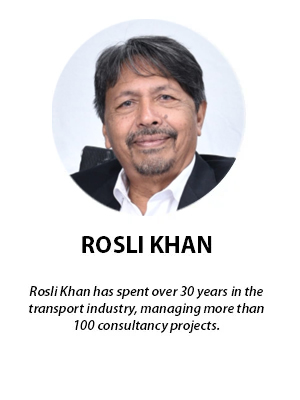
Having been involved in many traffic projects for various local authorities over a span of three decades, I wholeheartedly agree with the sentiments expressed by Bukit Aman criminal investigation department (CID) director Shuhaily Zain, as reported on Monday.
I have no doubt that politicians and local councillors should shoulder a large part of the blame for failing to give due regard to the safety of residents in city planning. This aligns with a call I made previously for politicians to acknowledge and rectify past mistakes in traffic management.
I commend the CID chief for raising this crucial matter in the public domain. After all, by and large, individuals joining the police force aspire to uphold law and order, not to manage traffic at busy intersections during peak hours.
Shoddy traffic plans
One indication of ineffective planning is the need to rely extensively on our police personnel to manage traffic, which has unnecessarily burdened the force.
Indeed, poor traffic management is obvious when local authorities have to rely on police officers to manage traffic manually at many locations, overriding traffic lights installed for that very purpose.
Politicians and local authorities must shoulder their share of the blame and seek long-term solutions. They must also steer away from the misconception that constructing more highways and promoting increased car usage is the answer.
The traffic jams we experience in the Klang Valley and many other cities across the country underscore the incompetence of councillors in planning traffic management.
Selangor is a prime example, with poor traffic management extending beyond Klang to eleven other local authorities, particularly Petaling Jaya, Subang Jaya, Ampang and Shah Alam.
The failure to address traffic congestion and road safety, which I have addressed previously, remains a recurring issue.
Road hierarchy
One example is the disregard for road hierarchy, which calls for planning to consider the functions and capacity of each road. Most local authorities disregard this aspect of road and traffic planning in a bid to please developers by approving housing and commercial projects in their respective areas.
Junctions and interchanges must prioritise the safety, not just of vehicles, but all road users, including pedestrians, cyclists and schoolchildren.
Allowing highways to build interchanges directly into residential areas with small roads ill-equipped to handle the volume of traffic contributes to all-day-long congestion and risks the safety of both road users and residents.
The PJD Link (formerly Kidex), LDP and Kesas highways are prime examples of the state government and local authorities turning a blind eye to public objections.
Highways are often allowed to run through the heart of towns without implementing proper bypass and ring roads.
As it stands highway concessionaires are allowed to reap benefits through toll collection, even as public safety is compromised.
That is the unfortunate reality today.
The time has come for our politicians and local councillors to accept responsibility and look for long-term solutions. - FMT
The views expressed are those of the writer and do not necessarily reflect those of MMKtT.
No comments:
Post a Comment
Note: Only a member of this blog may post a comment.